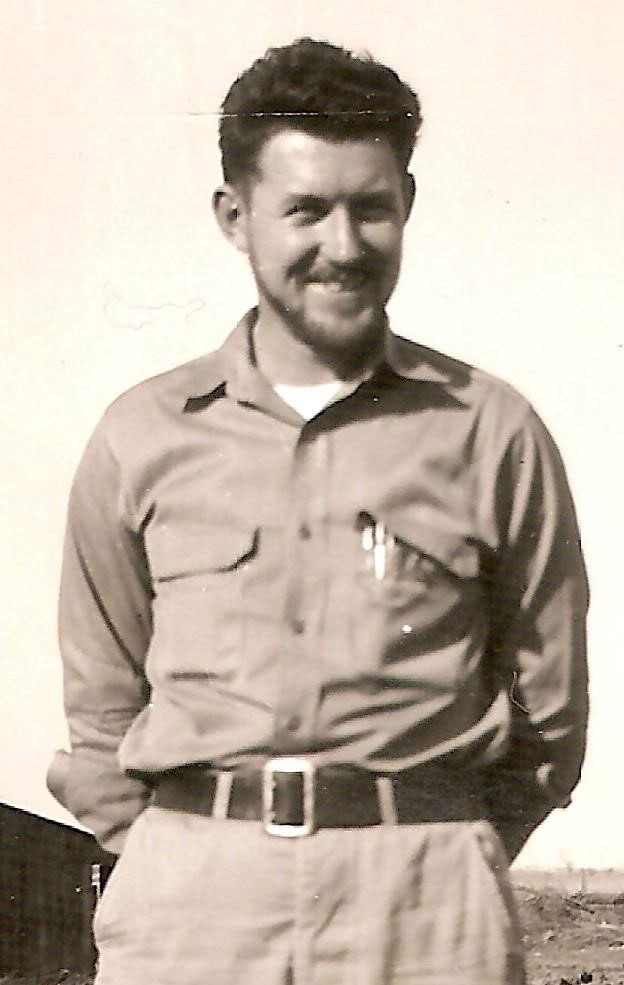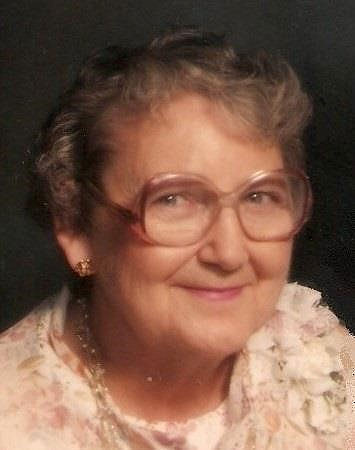The Woodcarving Duo
 Charles Baxter, the only child of Ruth Gordon Hubbard, was trained in art by his mother and strongly influenced by his grandfather Jerome. He took some art in school and studied drafting in Omaha Technical High School, 1935-1938, earning a scholarship for a drawing he did of a local landmark building. He left school in the 11th grade, much to his parents’ disapproval, to help supplement his family’s income during the Depression. WWII broke out the following year and Charles enlisted in the U.S. Navy at age 18, serving until March 24, 1942, a week before his 21st birthday.
Charles Baxter, the only child of Ruth Gordon Hubbard, was trained in art by his mother and strongly influenced by his grandfather Jerome. He took some art in school and studied drafting in Omaha Technical High School, 1935-1938, earning a scholarship for a drawing he did of a local landmark building. He left school in the 11th grade, much to his parents’ disapproval, to help supplement his family’s income during the Depression. WWII broke out the following year and Charles enlisted in the U.S. Navy at age 18, serving until March 24, 1942, a week before his 21st birthday.
He had learned a bit of “whittling” from his grandfather Jerome and carved some while in the Navy but post-war years were filled with work and he set any serious efforts towards art aside until the early 70s. Charles met and married Edna Thompson-ca. 1925-2011 and moved to Washington State where her family resided. There they had three children, Kevin 1960- , Alan 1963- and an adopted daughter, Cindy 1969-2021.
Charles was a welder and fabricator by trade but suffered a permanent work-related spinal injury when he almost fell to his death off a catwalk when his boys were very young. During his long recovery, he founded what became a thriving family business at home building educational wooden toys for children. As the business, Baxter-bilt Toys grew and the boys grew, everyone filled some role in this modern cottage industry, and the boys grew up in their dad’s shop. In the mid-70s, it was a physical therapist friend and woodcarver, Don Cullen, who brought Charles back to art through his support and inspiration. Charles would go over to Don’s home once a week in the evenings and carve in Don’s workshop. Charles became a regionally known carver and carving instructor in Washington State through the late 70s. His wife Edna became a carver as well, and the business transformed into Baxter Tools and Wood Products, as the couple focused on teaching and retailing woodcarving tools and supplies.
Charles taught scores of woodcarving classes, both in Washington State and later in Nebraska, while supplying the tools and materials for the craft. He specialized in beginner woodcarving classes–getting people interested and involved in carving. Charles taught simple carving patterns and developed a highly reductive approach to subjects to help his students learn quickly and accomplish simple but bold carvings rapidly. He felt the faster a student could pick up the skills and succeed at carving, the more chance there was that they would stay with it and learn more advanced skills later.
With regards to his own work, he loved the simplicity of 3-dimensional ergonomic shapes. However, he also enjoyed pushing the boundaries of undercutting in his relief work. Many of his best works of art were given away just out of his love of carving.
Charles and Edna moved to Kearney, Nebraska in 1984 when his mother Ruth passed away, taking over the home she had in town there.
Charles had wanted to either find an existing woodcarving group in Kearney or begin one himself. It just so happened that there was one in Kearney, called The Central Nebraska Wood Carvers. The group met monthly at the Kearney High School wood shop. He joined, and together they made a notable artistic contribution in the form of a large wood carving of cranes that hung in the old Kearney High School for many years, and later, after Charles’ death, it went on display at the Museum of Nebraska Art, and Charles was one of the artists listed as having been a part of creating this piece. It was on display for the annual Spring crane show, called Cranes-Taking Flight in 2018. In Charles’ later artistic career, he and his wife Edna Thompson Baxter helped their son Kevin Baxter with his woodcarving business in Kearney.
 Edna Thompson Baxter-ca. 1925-2011 was married to Charles W. Baxter, and while not as artistically prolific as her husband Charles and son Kevin, she did do some work of her own. Much of her artistic influence stemmed from her father, Halvor Thomasson Thoengen, the name later changed to Thompson after immigrating. Halvor came to America on his own at 16 years old. He never lived in Kearney, but his creative influence on his daughter Edna had a great bearing.
Edna Thompson Baxter-ca. 1925-2011 was married to Charles W. Baxter, and while not as artistically prolific as her husband Charles and son Kevin, she did do some work of her own. Much of her artistic influence stemmed from her father, Halvor Thomasson Thoengen, the name later changed to Thompson after immigrating. Halvor came to America on his own at 16 years old. He never lived in Kearney, but his creative influence on his daughter Edna had a great bearing.
Half his life, Halvor spent farming and in his later years he worked in a furniture plant. At home, he built furniture, picture frames, wall hangings, and shelves for family members. He used varied woods with distinct graining and burls, and inlaid many of his tabletops with geometric designs of dark against lighter contrast. He created unique lamps from tree limbs and wood-carved simple folk-art birds to accent them. Halvor was also a fiddler and played the traditional Norwegian Hardanger Fiddle. Edna’s mother Hilda, also of Norwegian origins, played harmonica. Edna was the youngest of six children and grew up in a home filled with traditional Scandinavian music, dancing, and art.
It’s from this background that she always loved art, art shows, and music. Her son Kevin remembers her drawing with him when he was just a boy, and making decorative arts, but she became a wood carver after her husband Charles began teaching carving. Her work showed the same kind of reductive approach Charles used, and they often made simple carvings as examples for his students. She loved carving small figurines and often joined Charles in his classes in later years. She was a supportive figure in the artistic endeavors of Charles, their son Kevin, and her grandchildren Kelsey and Chris Baxter. Edna passed away in 2011 in Kearney, Nebraska.




